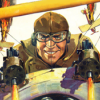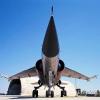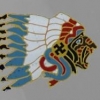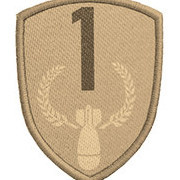Leaderboard
Popular Content
Showing most liked content on 09/12/2017 in all areas
-
3 pointsJust tested VonS's new FM - it does a beautiful job of capturing the slow but steady flight qualities of the Junkers. Click on shots for hi-res image.
-
3 points
-
2 pointsView File SF2_MiG19SK The MiG-19SK by CAF team, 3d work by Cocas, skins by Nyghtfall, other work by Coupi, testing by Stratos, Coupi, Wrench, Nyghtfall. Some Background: After the success of the Soviet Union’s first carrier ship, the Moskva Class (Projekt 1123, also called „Кондор“/„Kondor“) cruisers in the mid 1960s, the country became more ambitious. This resulted in Project 1153 Orel (Russian: Орёл, Eagle), a planned 1970s-era Soviet program to give the Soviet Navy a true blue water aviation capability. Project Orel would have resulted in a program very similar to the aircraft carriers available to the U.S. Navy. The ship would have been about 75-80,000 tons displacement, with a nuclear power plant and carried about 70 aircraft launched via steam catapults – the first Soviet aircraft carrier that would be able to deploy fixed-wing aircraft. Beyond this core capability, the Orel carrier was designed with a large offensive capability with the ship mounts including 24 vertical launch tubes for anti-ship cruise missiles. In the USSR it was actually classified as the "large cruiser with aircraft armament". Anyway, the carrier needed appropriate aircraft, and in order to develop a the aircraft major design bureaus were asked to submit ideas and proposals in 1959. OKB Yakovlev and MiG responded. While Yakovlev concentrated on the Yak-36 VTOL design that could also be deployed aboard of smaller ships without catapult and arrester equipment, Mikoyan-Gurevich looked at navalized variants of existing or projected aircraft. While land-based fighters went through a remarkable performance improvement during the 60ies, OKB MiG considered a robust aircraft with proven systems and – foremost – two engines to be the best start for the Soviet Union’s first naval fighter. “Learning by doing”, the gathered experience would then be used in a dedicated new design that would be ready in the mid 70ies when Project 1153 was ready for service, too. Internally designated “I-SK” or “SK-01” (Samolyot Korabelniy = carrier-borne aircraft), the naval fighter was based on the MiG-19 (NATO: Farmer), which had been in production in the USSR since 1954. Faster and more modern types like the MiG-21 were rejected for a naval conversion because of their poor take-off performance, uncertain aerodynamics in the naval environment and lack of ruggedness. The MiG-19 also offered the benefit of relatively compact dimensions, as well as a structure that would carry the desired two engines. Several innovations had to be addresses: - A new wing for improved low speed handling - Improvement of the landing gear and internal structures for carrier operations - Development of a wing folding mechanism - Integration of arrester hook and catapult launch devices into the structure - Protection of structure, engine and equipment from the aggressive naval environment - Improvement of the pilot’s field of view for carrier landings - Improved avionics, esp. for navigation Work on the SK-01 started in 1960, and by 1962 a heavily redesigned MiG-19 was ready as a mock-up for inspection and further approval. The “new” aircraft shared the outlines with the land-based MiG-19, but the nose section was completely new and shared a certain similarity to the experimental “Aircraft SN”, a MiG-17 derivative with side air intakes and a solid nose that carried a. Unlike the latter, the cockpit had been moved forward, which offered, together with an enlarged canopy and a short nose, an excellent field of view for the pilot. On the SK-01 the air intakes with short splitter plates were re-located to the fuselage flanks underneath the cockpit. In order to avoid gun smoke ingestion problems (and the lack of space in the nose for any equipment except for a small SRD-3 Grad gun ranging radar, coupled with an ASP-5N computing gun-sight), the SK-01’s internal armament, a pair of NR-30 cannon, was placed in the wing roots. The wing itself was another major modification, it featured a reduced sweep of only 33° at ¼ chord angle (compared to the MiG-19’s original 55°). Four wing hardpoints, outside of the landing gear wells, could carry a modest ordnance payload, including rocket and gun pods, unguided missiles, iron bombs and up to four Vympel K-13 AAMs. Outside of these pylons, the wings featured a folding mechanism that allowed the wing span to be reduced from 10 m to 6.5 m for stowage. The fin remained unchanged, but the stabilizers had a reduced sweep, too. The single ventral fin of the MiG-19 gave way to a fairing for a massive, semi-retractable arrester hook, flanked by a pair of smaller fins. The landing gear was beefed up, too, with a stronger suspension. Catapult launch from deck was to be realized through expandable cables that were attached onto massive hooks under the fuselage. The SK-01 received a “thumbs up” in March 1962 and three prototypes, powered by special Sorokin R3M-28 engines, derivatives of the MiG-19's RB-9 that were adapted to the naval environment, were created and tested until 1964, when the type – now designated MiG-SK – went through State Acceptance Trials, including simulated landing tests on an “unsinkalble carrier” dummy, a modified part of the runway at Air Base at the Western coast of the Caspian Sea. Not only flight tests were conducted at Kaspiysk, but also different layouts for landing cables were tested and optimized as well. Furthermore, on a special platform at the coast, an experimental steam catapult went through trials, even though no aircraft starts were made from it – but weights hauled out into the sea. Anyway, the flight tests and the landing performance on the simulated carrier deck were successful, and while the MiG-SK (the machine differed from the MiG-19 so much that it was not recognized as an official MiG-19 variant) was not an outstanding combat aircraft, rather a technology carrier with field use capabilities. The MiG-SK’s performance was good enough to earn OKB MiG an initial production run of 20 aircraft, primarily intended for training and development units, since the whole infrastructure and procedures for naval aviation from a carrier had to be developed from scratch. These machines were built at slow pace until 1965 and trials were carried out in the vicinity of the Black Sea and the Caspian Sea. FROM NOW ON IS MY WORK. STRATOS. With the reception of the first new carrier in late 1965, the new aircraft began sea trials during the spring of 1966 and for summer the first planes were permanently deployed on board. The ship and it's planes began a cruise around the world doing good will port visits showing the flag and the new capabilities of the Soviet Navy. The carrier was permanently escorted by USN info gathering ships monitoring the capabilities of the new vessel and its air component. The first real deployment with combat ocured in the Pacific Ocean in 1969, in a dare move, the carrier slipped into the Yellow Sea during the night and launched it's aircraft at first light, the planes strike several military facilities in China mainland, specially around Shangai, and the first A-A combat took place when a pair of SK's engaged intercepting J-6 of the PLAAF while escorting strike armed SK's. All the soviets returned to the carrier that was already steaming to get out of the South China sea trough Tsushima straits. By early 1972, new models are being introduced into the fleet and the SK's started to show their age in the fast pace of aviation during Cold War, so as soon as the new models completed the air component the SK's were passed to train new naval pilots on the fleet training installations in Crimea, were it served with distinction until the last cells were too worn out to be safely operated beyond 1980. So the SK's story came to an end with the honor of being the first real combat aircraft onboard soviet carriers, and the plane that first tasted the blood for carrier based pilots. Submitter Stratos Submitted 09/11/2017 Category What If Hangar
-
1 pointReluctantly, Jederman set out after the east-bound convoy, at the head of four bomb-laden 109s. The boss had expressed some confidence that a rapid repeat attack by jagdbomber coming in at low level would likely arrive before the enemy air cover culd be replenished, but as he climbed away, our Willi had his doubts... It wasn't long before Jedermann had the convoy in sight. At first he thought the shell spalshes indicated that somebody else on the same side had similar plans for the convoy, but he soon realised that they were 'shorts' from heavy-calibre AA fire from the convoy escort. The first sign of trouble came when his number four came on the air in a panic, reporting he was going down. Looking behind he saw the 109 slanting down to the left, but no sign of any enemy aircraft. Had he been hit by the flak? It seemed unlikely at this range, but all of a sudden those shell spashes looked a lot more dangerous. Jedermann decided to attack a merchantman at the rear of the convoy and to bomb from level flight on a track diagonally across the enemy. He began to swing around in an arc towards his intended target. At this point, the other two 109s were still with him... ...so he ordered them to attack independently, if only to draw the enemy's fire. He wasn't feeling confident that any hits would be scored, and just wanted to get this done and get out of it. Loseing one of his comrades to an unknown cause short of the target had thoroughly dampened any ehthusiasm he'd felt for this show. Which wasn't very much, at all. Quite keen not to be caught by the blast of his own bomb, crash into the masts of his target or get show down, Jederman pulled up short of his target, levelled off, tried to ingnore the flak, and then let fly as target started to disappear under his nose. Bomb gone, he rolled hard to the right and began a steeply banked turn to get out and away. In the pic below you can see the bomb, just beneath Red 5's spinner. Boom! Nobody was more surprised than Willi when the bomb hit just ahead of the merchantman's bridge. As if that wasn't sufficient good fortune, Red 7 got a hit too, on a 4-stack destroyer, towards the head of the convoy. Bravo! Both ships obstinately refused to sink, but that wasn't to be expected from a single 250 kilo bomb. But it was all rather satisfying, nevertheless. Perhaps this jabo business isn't so bad after all, Jedermann told himself. Jedermann set course south, for home, and throttled back, checking the skies around and calling for the schwarm to re-form. Red 7 was soon in position, but of Red 6, there was no sign as yet. The reason for that, it soon became clear, was that he was having a bit of bother with a couple of Hurricanes. Back north went our hero, but by the time he got there the two RAF fighters were beating a retreat, having evidently snapped up Red 6. Jedermann slowly overhauled the culprits... ...but (as usual with un-modded AI) they saw him coming, and it was only after an extended dogfight that Jederman managed to get hits on one of the Hurris. The Hurricane had only been lightly hit, though, its strong structure displaying its customary resistance to enemy fire. Especially as Jedermann had been using mainly his twin synchronised MGs, saving his cannon rounds for the kill. With the range wound down, now was that time. Another burst with all weapons sent the Hurricane down, minus several feet off the tip if his left wing. Meanwhile, up behind, Red 7 was rolling inverted onto the tail of the second RAF fighter, clearing Jedermann's tail and getting a kill of his own, into the bargain. Time to go home! Two 109s lost was too high a price to pay in Jedermann's eyes, whether or not the air sea rescue people managed to bring one or both pilots home. Two Hurricanes shot down evened the score, and better still, Jedermann's merchantman was seen to go down, so he's now joined the rather exclusive club of single-seater ship-killers. He just hopes the boss believes him when he puts it down to pure luck, and won't make a habit of giving him such missions. There's plenty to do in the skies over Africa, without going to sea to look for trouble.
-
1 point
-
1 pointView File SF2_Template_MiG19SK The template pack for the MiG-19SK, all the templates works by Nyghtfall Submitter Stratos Submitted 09/11/2017 Category Skin Templates
-
1 point
-
1 pointHello, Fulcrums* of the North Korea People AF : Green skin by WhiteBoySamurai (little modification) and Grey camo, created from the MiG-29K Template by Russouk. I would like to add a camo... any idea my friends ? * 9-12 and 9-13 variants
-
1 point
-
1 point
-
1 point
-
1 point
Important Information
By using this site, you agree to our Terms of Use, Privacy Policy, and We have placed cookies on your device to help make this website better. You can adjust your cookie settings, otherwise we'll assume you're okay to continue..

















